Use controls above or click here to open this Hometown Heroes podcast in a new window
Episode #377 of Hometown Heroes, debuting July 25, 2015, focuses on the 70th anniversary of the sinking of the U.S.S. Indianapolis (CA-35). At the time of this airing, 32 survivors of the heavy cruiser’s 1,196-man crew remain. 14 of them are gathering in Indianapolis for a 70th anniversary reunion. Follow THIS facebook feed to keep up with the survivors’ activity.
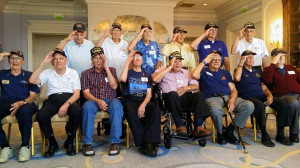
Among the festivities are the debut of a documentary film capturing the story of what is regarded as the most catastrophic naval tragedy in history. Another film, this one a major Hollywood production starring Nicolas Cage, is in production now. At 12:14 a.m. on July 30, 1945, just four days after delivering components of the atomic bomb to Tinian, the U.S.S. Indianapolis was hit by two Japanese torpedoes. It took just 12 minutes for the ship to sink, but nearly 900 men survived the explosion and sinking. The tragedy deepened when no one realized the ship was gone. The 317 who eventually survived spent almost four days floating in shark-infested waters, watching hundreds of their shipmates die as a result of exposure, thirst, salt poisoning, or gruesome shark attacks.
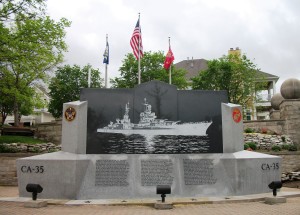
This episode of Hometown Heroes features the story of one survivor who is not at the 70th anniversary reunion, but is still going strong in his hometown of Florence, AZ. Adolfo “Al” Celaya originally appeared on Hometown Heroes when the 65th anniversary of his ship’s sinking arrived in 2010. At the time, he was 83 years old and still working with his son in the heating and air conditioning business he had founded in San Jose, CA.
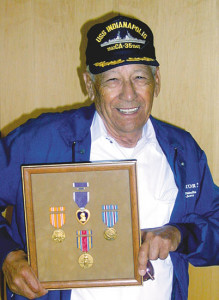
Celaya had never been to high school when he enlisted in the Navy in 1944. You’ll hear him explain how that unfolded, and detail some of his experiences on the Indianapolis, including his on-the-spot commentary on the flag raising atop Iwo Jima’s Mt. Suribachi which leaves him shaking his head today. Celaya also discusses delivering the atomic bomb components to Tinian, and how sailors speculated what might be in those top secret containers. He was often ridiculed for sleeping with a blanket on, despite the hot conditions the Indianapolis was sailing in during the summer of 1945. You’ll hear him explain why he never let go of that blanket, and why he thinks it might just have saved his life when the torpedoes struck the ship just after midnight on July 30, 1945. Like many of the 1,196 aboard ship, Celaya was sleeping when explosions rocked the heavy cruiser. “When I woke up there was no blanket,” he remembers. “The fire had taken it off.” The 18-year-old was burned on his hands and legs, and pretty much everywhere else that hadn’t been covered with the blanket. “My hair was almost all gone, my eyelashes were gone,” Celaya says.
“It was a pretty good size blast, and it killed a lot of sailors around me. The only thing that saved me, I think, was the blanket.”
Little did he know the nightmare was just beginning. After abandoning ship, he would spend the next three and a half days in the water, hoping and praying that rescue would come, while he witnessed fellow sailors falling victim to a relentless horde of sharks. Listen to Hometown Heroes for Celaya’s memories from those harrowing days, including why he kept a small medallion in his mouth while in the water, as well as how he met the “angel” who was responsible for his rescue.
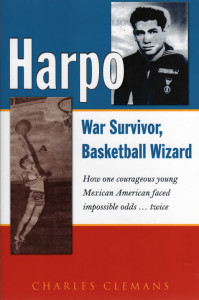
He would spend more than three months recovering in Long Beach Naval Hospital, and would eventually enroll in Florence High School back home in Arizona, and spearhead an unlikely underdog story that culminated in a state basketball championship. That story is featured in the book, Harpo: War Survivor, Basketball Wizard by his fellow Florence, AZ native Charles Clemans. If you’re interested in hearing even more from Mr. Celaya, visit this link for a youtube video produced by Douglas Schwartz. Celaya has shared his story with many audiences, as well as with today’s generation of returning veterans, and has recently been involved with the Veterans Heritage Project in Tucson, a program that connects veterans with high school students in an effort to keep history alive. If you ever have the privilege of meeting Mr. Celaya, please thank him for serving our country. This episode also features a brief postscript regarding one of those sailors who did not survive the Indianapolis tragedy, and how that made it hit home even more deeply for me. Watch this television story about the man who contacted me, retired Army Lt. Col. Paul Loeffler III, and his late father, Paul E. Loeffler, Jr., who went down with the Indianapolis. As far as we can tell, we’re not related, but as you might imagine, it is an honor to share a name with those two, and a powerful reminder to never forget the price of our freedom.
—Paul Loeffler

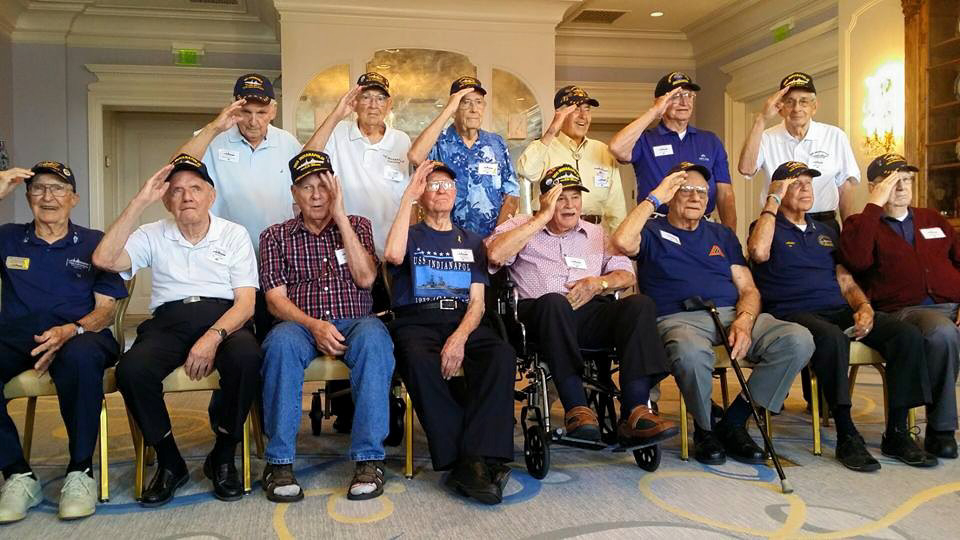
Leave a Reply